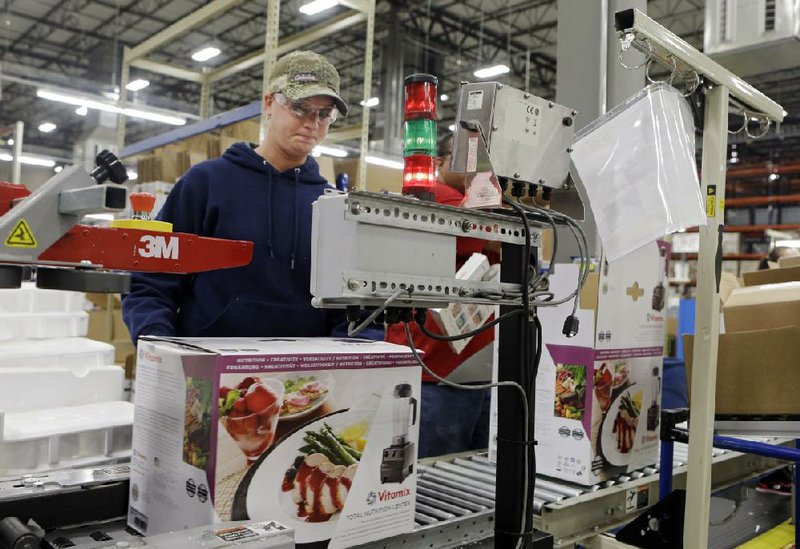WASHINGTON -- U.S. wholesale businesses increased their stockpiles in March by the largest amount in five months while sales increased at the fastest clip in 10 months.
A second report Friday said U.S. employers posted job openings in February near a level not seen since before the recession.
Wholesale stockpiles rose 1.1 percent in March after a 0.7 percent gain in February, the Commerce Department reported Friday. It was the ninth-consecutive monthly gain and the largest increase since a 1.2 percent rise in October.
Sales at the wholesale level were up 1.4 percent, the best showing since a 1.9 percent rise in May 2013.
The sizable gain in sales should encourage businesses to keep restocking their shelves to meet rising demand, analysts said. That will mean increased orders to factories and rising production that would help economic growth.
In the January-March quarter, the economy slowed to a barely discernible growth rate of 0.1 percent after growth of 2.6 percent in the October-December quarter. A slowdown in inventory building subtracted 0.6 percentage point from first-quarter growth.
But economists expect the drag from a slowdown in inventory building will ease in the second quarter. The big increase in March inventories supports that view, indicating that there was growing momentum headed into the second quarter.
Many analysts are looking for growth to easily top 3 percent in the second quarter, with the most optimistic saying the economy may surge to growth above 4 percent, reflecting pent-up demand from consumer spending that was delayed during the harsh winter.
Analysts think that growth will hold above 3 percent in the second half of this year. If that forecast proves accurate, it would mean the country will enjoy the strongest year for the economy since 2005, two years before the recession hit.
U.S. employers advertised slightly fewer jobs and slowed hiring a bit in March, though the declines came after healthy gains the previous month. The figures suggest the job market is improving in fits and starts.
The Labor Department said Friday that employers posted 4 million jobs in March, down 2.7 percent from February. But February's total nearly matched November's for the highest level of openings since January 2008, when the recession was just beginning.
The report also showed that February's data for hiring and quits was revised much higher, indicating that the job market was in better shape that month than initially estimated. It's a good sign when more people quit their jobs, because most people do so to take a new position, frequently at higher pay, analysts said.
Quitting also opens up a position that someone out of work can take.
The number of people quitting their jobs in both February and March reached the highest level since July 2008, Friday's report said.
Total hiring, meanwhile, dipped 1.6 percent to 4.63 million in March. That's below the 5 million monthly hires that are typical for a healthy job market. But it's 7.5 percent higher than 12 months earlier.
"While conditions in the labor market have improved appreciably, they are still far from satisfactory," Yellen said in testimony before Congress' Joint Economic Committee earlier this week. "In light of the considerable degree of slack that remains in labor markets and the continuation of inflation below the committee's 2 percent objective, a high degree of monetary accommodation remains warranted."
There are about 2.6 unemployed Americans for each open job, the report shows. That average has slowly been approaching the 2-to-1 ratio that is typical of healthier economies. It reached 6.7 in July 2009, just after the recession ended.
Information for this article was contributed by Martin Crutsinger and Christopher S. Rugaber of The Associated Press and by Michelle Jamrisko and Victoria Stilwell of Bloomberg News.
Business on 05/10/2014
